
Tranalysis
The Paper News learned that the "Greeks-From Agamemnon to Alexandria" exhibition will be held on November 20Held at the Capital Museum. As one of the most important exhibitions in the Capital Museum's "Exchange and Mutual Learning of World Civilizations" series of exhibitions, the exhibition brings together 270 pieces (sets) of collections from 14 museums and cultural relics institutions in Greece, including the National Archaeological Museum of Greece and the Thessaloniki Archaeological Museum. These precious exhibits span the period from the Greek Neolithic Age in 5800 BC to the Hellenistic era in the 1st century BC, and comprehensively cover all periods of ancient Greek civilization.

exhibition site

exhibition site
In the long process of human history, various nations in the world have created civilizations with their own characteristics and logos. Both ancient China and ancient Greece created brilliant civilizations and left rich and colorful cultural heritage for future generations. These two ancient civilizations, one in the eastern part of the Asian continent and the other in the eastern part of the European continent, complement each other in different spaces at almost the same time.

The double-edged axe is speculated to be bronze in the third phase of the Middle Minoan Culture (about 1700- 1600 BC)
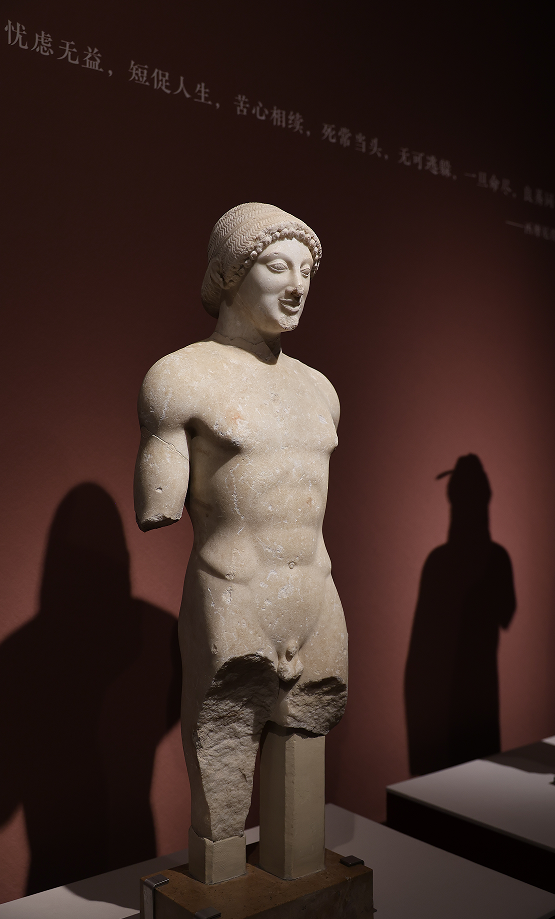
A statue of a man circa 500 BC in marble
This exhibition shows the social and cultural features of ancient Greece in physical form, slowly unfolding a panoramic picture of ancient Greek history for the audience, tracing the source of modern Western civilization and understanding the diversity and commonality of civilizations.
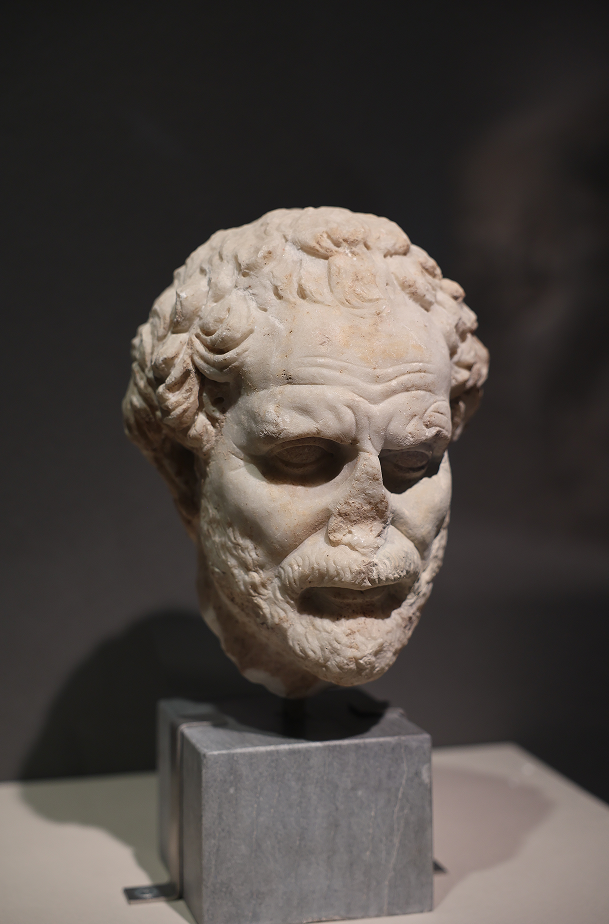
The original Roman replica of the head of Demosthenes from the 2nd century AD is dated from 280 BC.
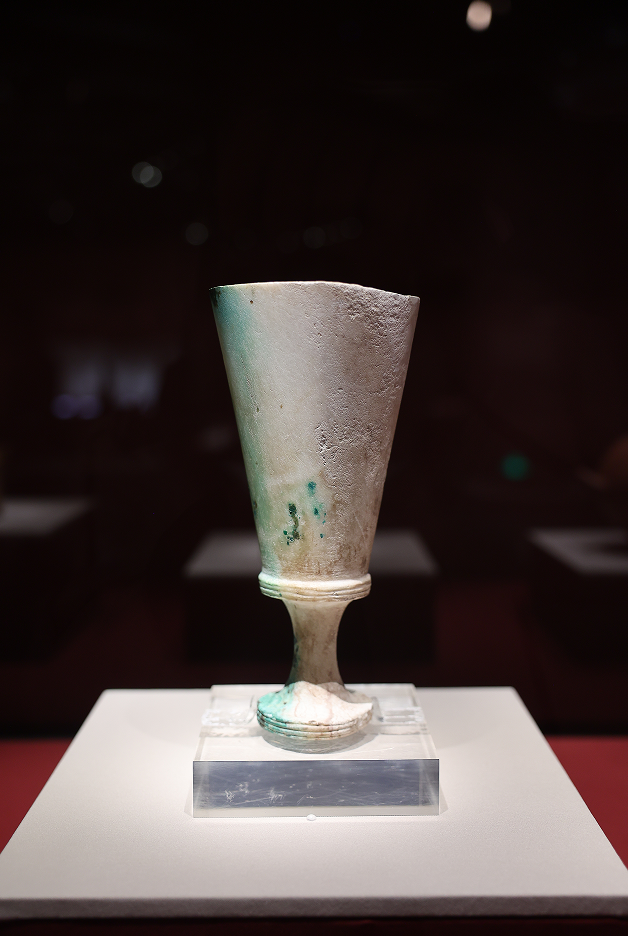
Party "Eucharist Cup" Late Bronze Culture in mainland Greece Phase I A(second half of the 16th century BC) White alabaster

Chronology of Greek history
Aegean civilization
Around 3000 BC, the earliest Greek civilization appeared on the Cyclades Islands, which academic circles called Cyclades culture. The representative cultural relic of Cyclades culture is the statuettes of figures, which are unique in shape and are an outstanding representative of ancient Greek art.
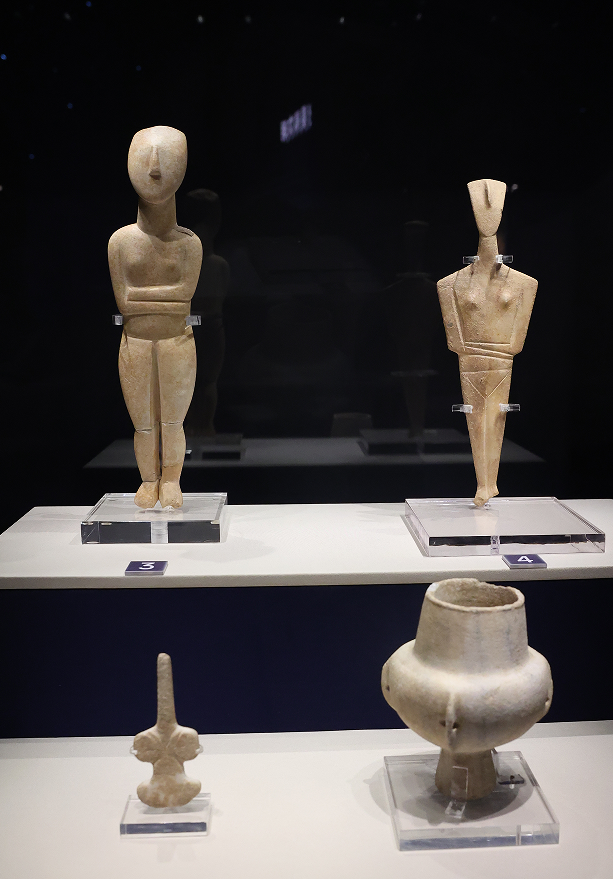
Top left, top right: The statue of a woman with bent arms, the second phase of early Cyclades culture (2800- 2300 BC)
Lower left: Violin-shaped woman statue, Phase 1 of early Cyclades culture (3200- 2800 BC)
Lower right: Oil lamp-shaped jar, Phase I of Early Cyclades Culture (3200- 2800 BC)
After the Cyclades culture, the Minoan civilization appeared on the Greek island of Crete. The Minoan Civilization, also known as the Crete Civilization, was one of the early bronze civilizations in the Aegean region of Greece, spanning from about 3000 BC to 1100 BC. The ruins of the "Minoan Palace" that survive to this day bear witness to its glory.

"Baking plate"-shaped vessel in the second phase of the early Cyclades culture (2800- 2300 BC), palm mica pottery contains impurities
This "baking plate"-shaped object has a forked handle. In the center of the pattern is a large mastless ship with many auxiliary oars, and there is also a symbolic pattern of fish on the right side of the ship's progress. In the Cyclades Islands, such "roasting plate"-shaped objects have been unearthed both in living sites and in tombs. Such artifacts have also been found in mainland Greece and Crete. Two similarly shaped bronze objects were also found in noble tombs at the Arajashuk site in Turkey, believed to be made based on such objects from the Cyclades culture. The purpose of these "gril-plate"-shaped utensils is unclear, and experts speculate that they can be used as plates, measuring instruments for the salt trade, astroscopes, sacrificial supplies or mirrors.

Black painted amphora 510 - 500 BC pink-yellow clay
The Mycenaean civilization was named after the city of Mycenaean in the strong state located in the Peloponnese Peninsula. Its age ranged from about 1600 to 1100 BC. The Mycenaean people promoted the development of their own civilization through trade and cultural exchanges with other civilizations in the Aegean and Mediterranean regions. The Mycenaean civilization was famous for its huge palaces, city walls and aristocratic tombs. The surviving art works, such as gold ware and pottery, also showed a superb level of craftsmanship and became a representative of the Greek bronze civilization.
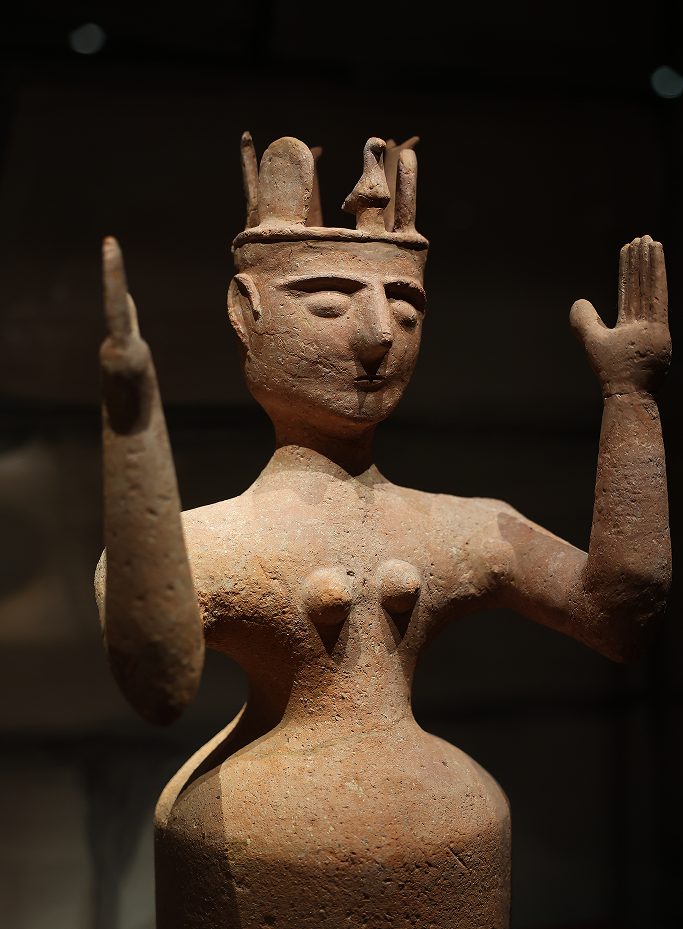
The pottery statue of a female with raised arms in the late Minoan culture, third period B to C (about 1250- 1150 BC)

The first phase of the late bronze culture in mainland Greece (the second half of the 16th century BC)
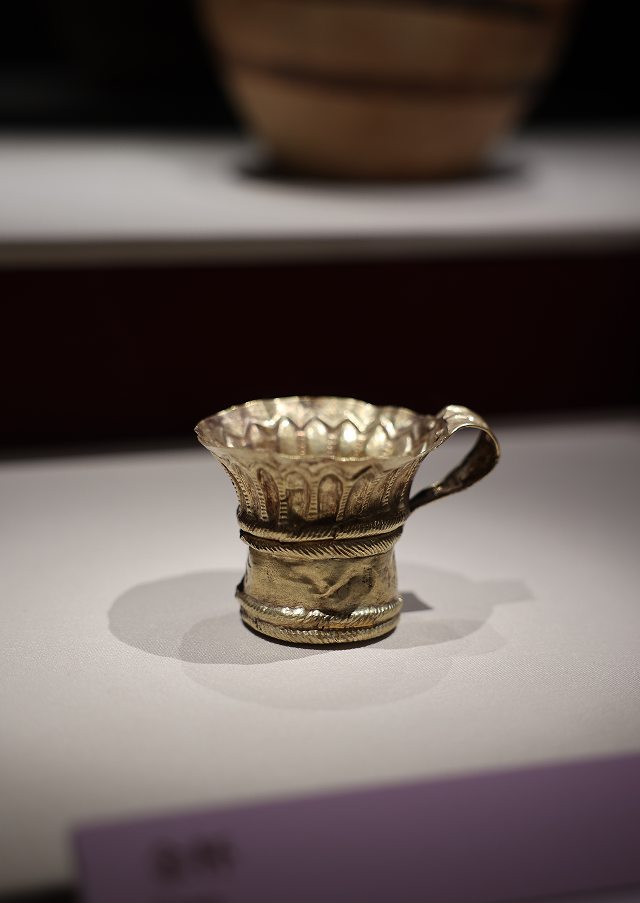
Gold Cup Late Bronze Culture in Greek Mainland Phase I (second half of the 16th century BC) Gold

A replica of the "Agamemnon Golden Mask" of the Late Bronze Culture in mainland Greece, Phase I (the second half of the 16th century BC)
The hammered gold mask depicts a man with a beard. The mask has two holes in the area near the ears to secure the mask to the head of the deceased. A total of five masks were found in Tomb Circle A, and only this mask vividly reflected the face of the deceased. Schliemann believed that the owner of the mask was Agamemnon, so he called it the "Agamemnon Golden Mask." In fact, the mask belonged to a Mycenaean king.
The replica is itself a work of art, made by Swiss artist émile Gilliéron. Emile Gileron was the court painter of King George I of Greece, and also worked for Schliemann, who was discovered in Mycenae, and Evans, who was discovered in Knossos. He and his son made many replicas of Minoan and Mycenaean cultural relics.

Helmet Late Bronze Culture in mainland Greece, Phase III B(13th century BC) Boar tooth

Single-blade Dagger Late Minoan Culture Phase III A1(1400- 1375 BC) Bronze

In the late Jian period, A1, the third phase of the Minoan culture (1400- 1375 BC) bronze and gold
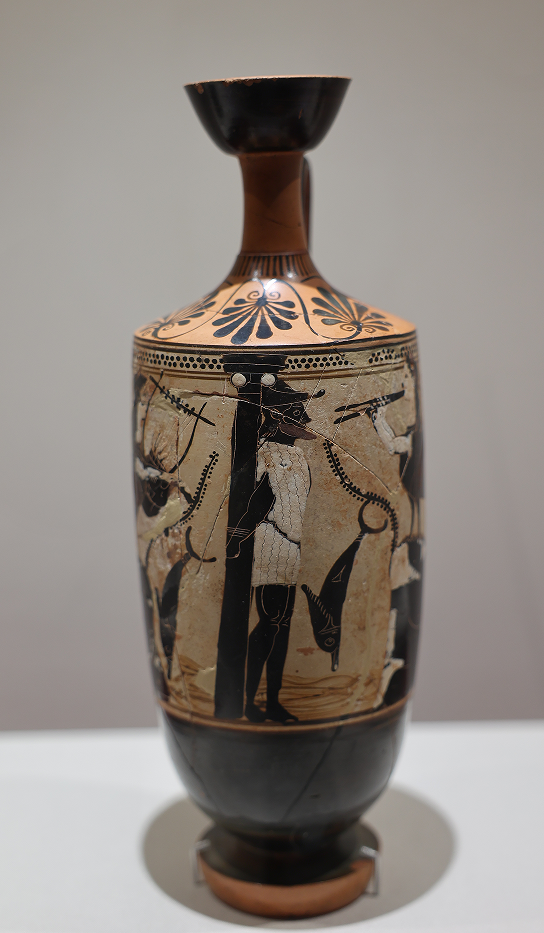
Black figure pottery vase late 6th century BC
The rise of city-states
After the collapse of the Mycenaean civilization, Greek history entered a period of relative silence. Words disappeared and there were few archaeological sites, so it was called the "Dark Ages." Because it is said that this is the era when the blind poet Homer lived, it is also called the 'Homer Era.'
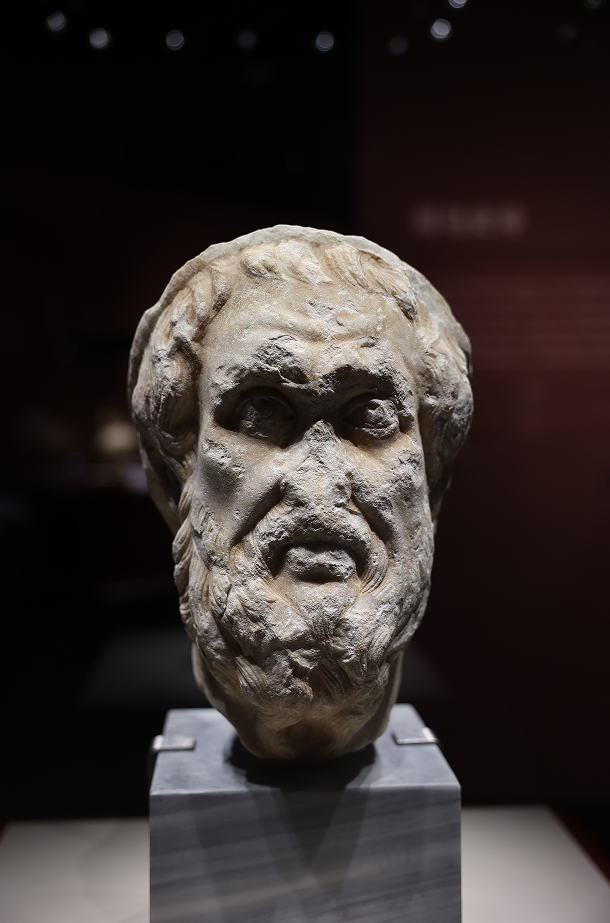
Head of Homer mid-2nd century AD (Roman imitation of the original Greek circa 300 BC) Marble
"Homer's Epic" is a collective term for the two long epics-"Iliad" and "Odyssey"-written by the blind ancient Greek poet Homer, marking the beginning of Western literature. Although the "Homeric Epic" is generally recognized as being written in the 9th to 8th centuries BC, heroes from the Mycenaean era of the past appear in the epic plot. The poet Homer is generally regarded as the creator of epic poems.
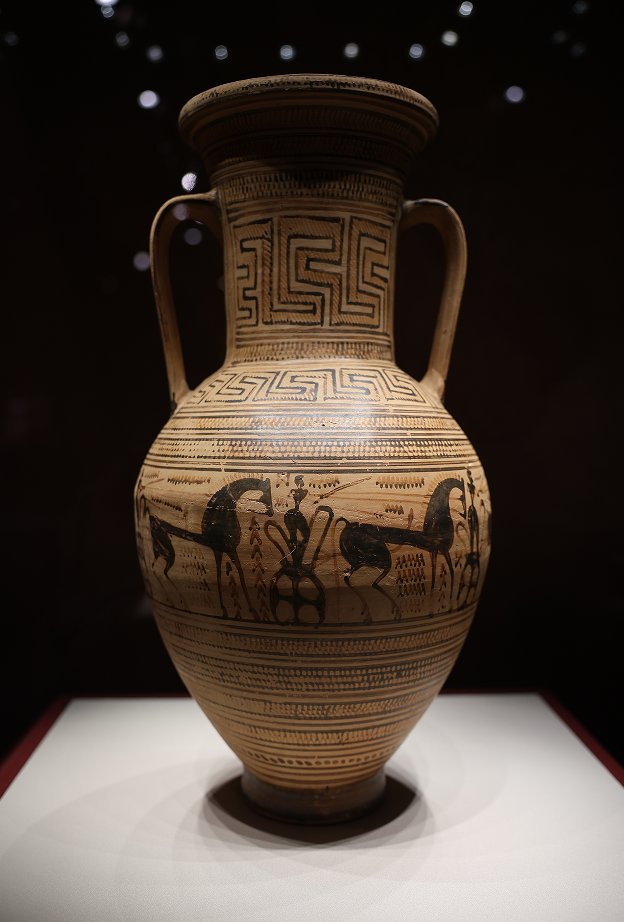
Late Attica geometric pattern amphora circa 720 BC
The "Dark Ages" were followed by the "Antique Age"(about the 8th-6th century BC). A major feature of the "Antique Era" was the launch of colonial activities by the Greeks, which covered the areas around the Mediterranean Sea and the Black Sea. Another feature is the gradual formation of various Greek city-states.
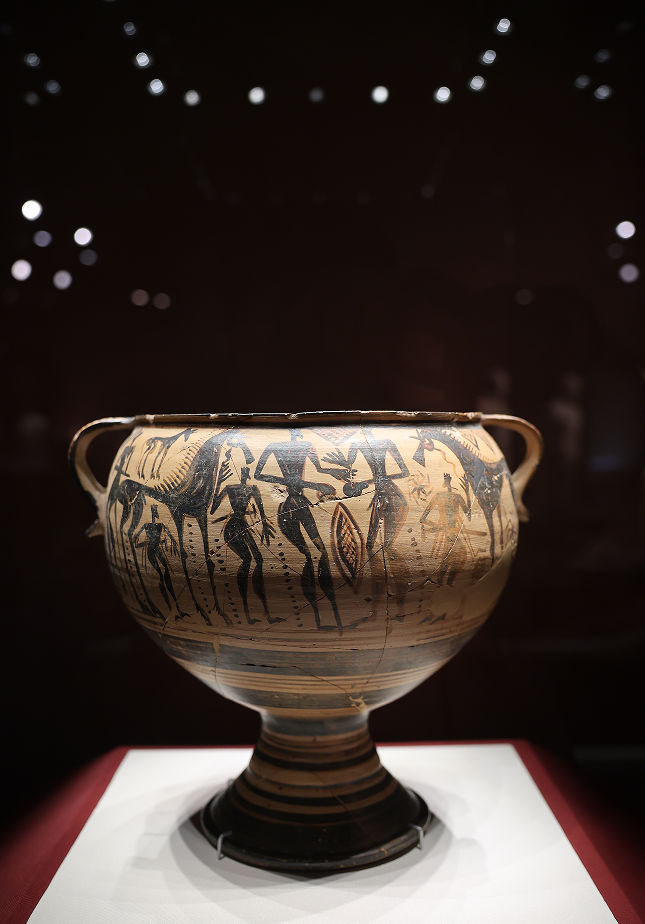
Boeotian geometric pattern binaural cup 690 - 670 BC pottery
The ancient era was also the period of formation of plastic arts. During this period, Oriental culture influenced Greek art through trade exchanges, and Greek art formed its own style by absorbing the strengths of Oriental culture and gradually getting rid of the influence of Oriental culture.
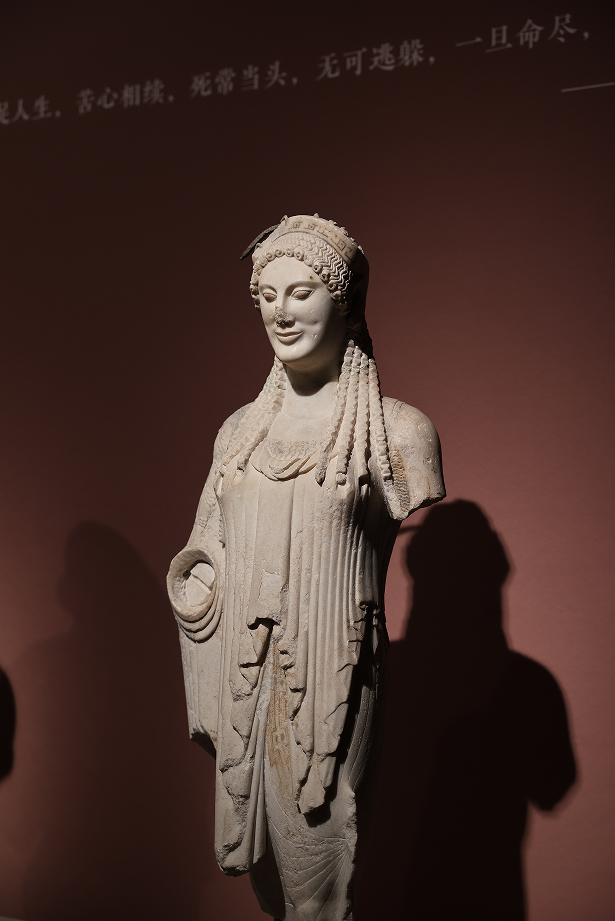
Statue of a woman 520-510 BC in marble
The portrait of this woman retains many traces of colorful decoration on her clothes, face, hair and ribbons. There is still a bronze component left on its head, which should have been used to drive off birds. The end of the lock of hair and the outstretched right hand (used to provide sacrifices to the goddess) are made of a separate piece of marble and attached to the statue. Unlike other ordinary statues of women, this statue wears a shorter robe that symmetrically covers the chest, exposing a small part of the underwear. The main colors on clothes are blue and red, and hair is brown. The sculptor professionally depicts the exquisite facial features and the rich and diverse pleats in the garment.
According to expert research, this statue of a woman belongs to a group of statues dedicated to the altar of Athena in the late 6th century BC.

Bronze helmet 550- 525 BC bronze; gold cover mouth 550- 525 BC gold
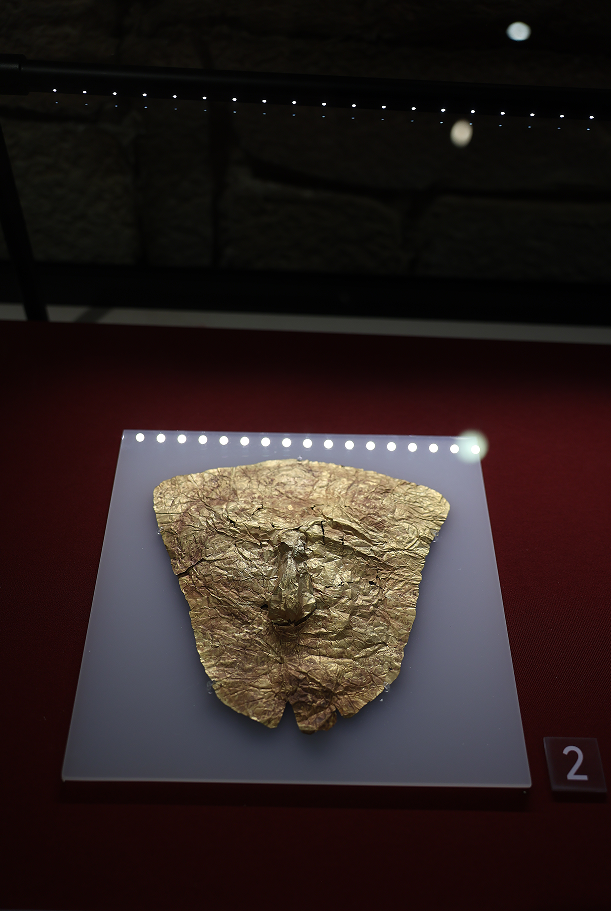
Gold overlay late 6th century BC
classical era
The classical era in Greece refers to the period from the beginning of the Greek War in the early 5th century BC to the 420s BC. The Classical Greek period was a period full of wars and conflicts, first the war between the Greeks and the Persian Empire, followed by the rise of Athens and the Peloponnesian War between the two major military alliances led by Athens and Sparta.
The same was true in the 4th century BC. After the Battle of Mandinia between Thebes and Sparta ended in 362 BC, the historian Xenophon lamented: "The consequences of the war were exactly the opposite of what people expected in advance... Greece after the war was more chaotic and disorderly than before the war.

exhibition site
But during this period, the Greeks achieved unprecedented political and cultural achievements. The ancient democratic system established by the Athenians gradually improved and matured, adding a valuable wealth to human political theory and social organization practice.
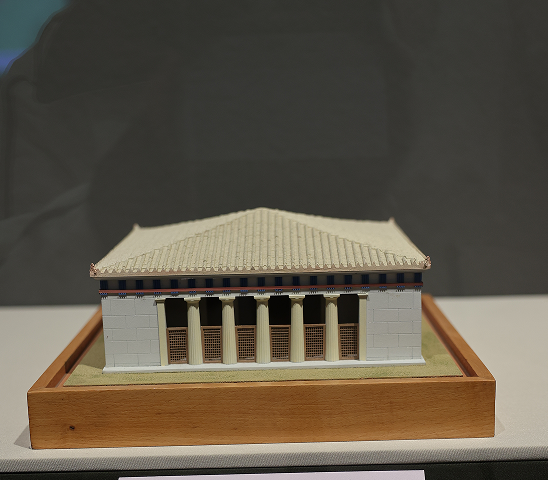
Model of the old 500-member council hall circa 500 BC plaster
In addition to the classical architecture represented by the Parthenon and the literary achievements represented by ancient Greek drama, Greece in the classical period also brought us Herodotus, the "father of history", the medical scientist Hippocrates, and famous historical figures such as philosophers Socrates and Plato, all of whom have made outstanding contributions in their respective fields and left a mark in human history.

Model of the memorial statue of the ten tribes heroes in the second half of the 4th century BC plaster
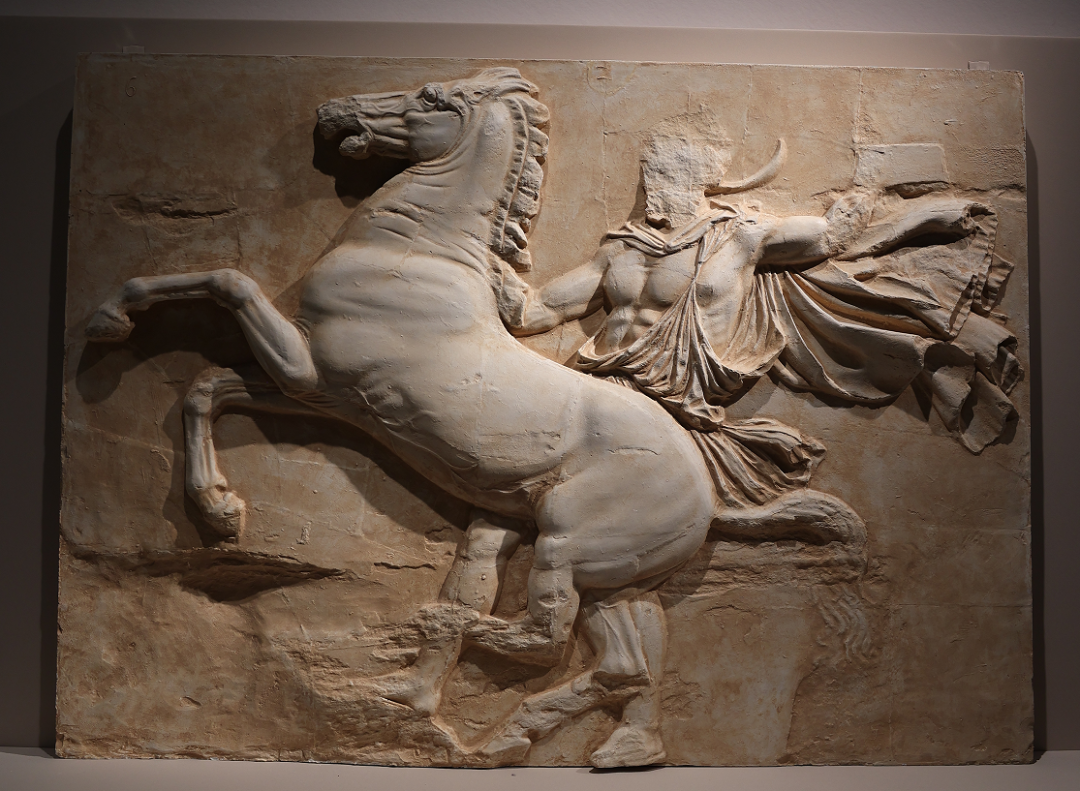
The No. 8 embossed belt (plaster replica) on the west side of the Parthenon Temple is modern. The original dates from plaster from 442 to 438 BC, and the original material is marble
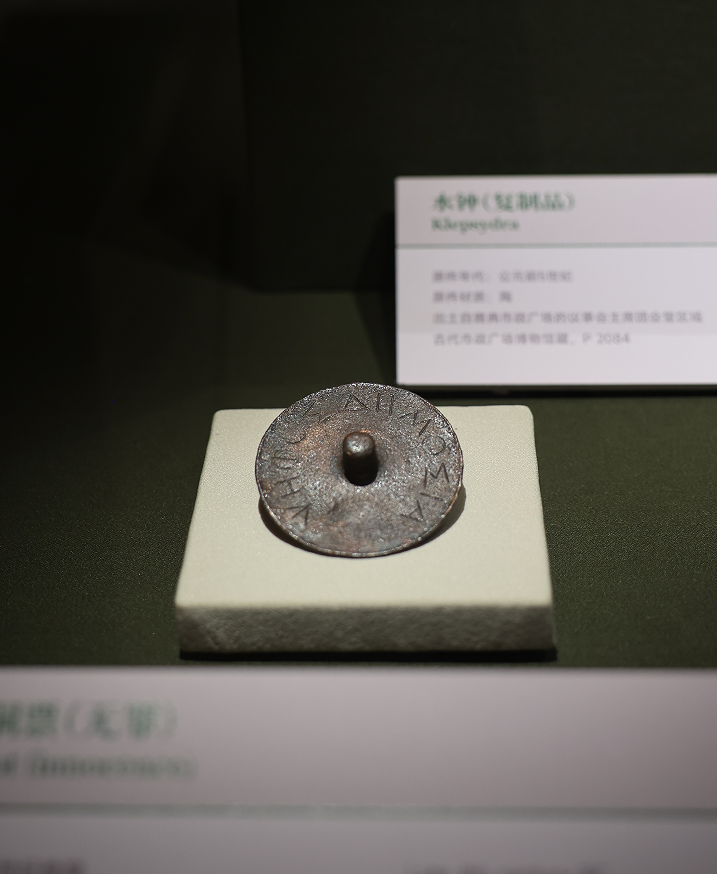
Bronze ticket (innocence) late 4th century AD bronze
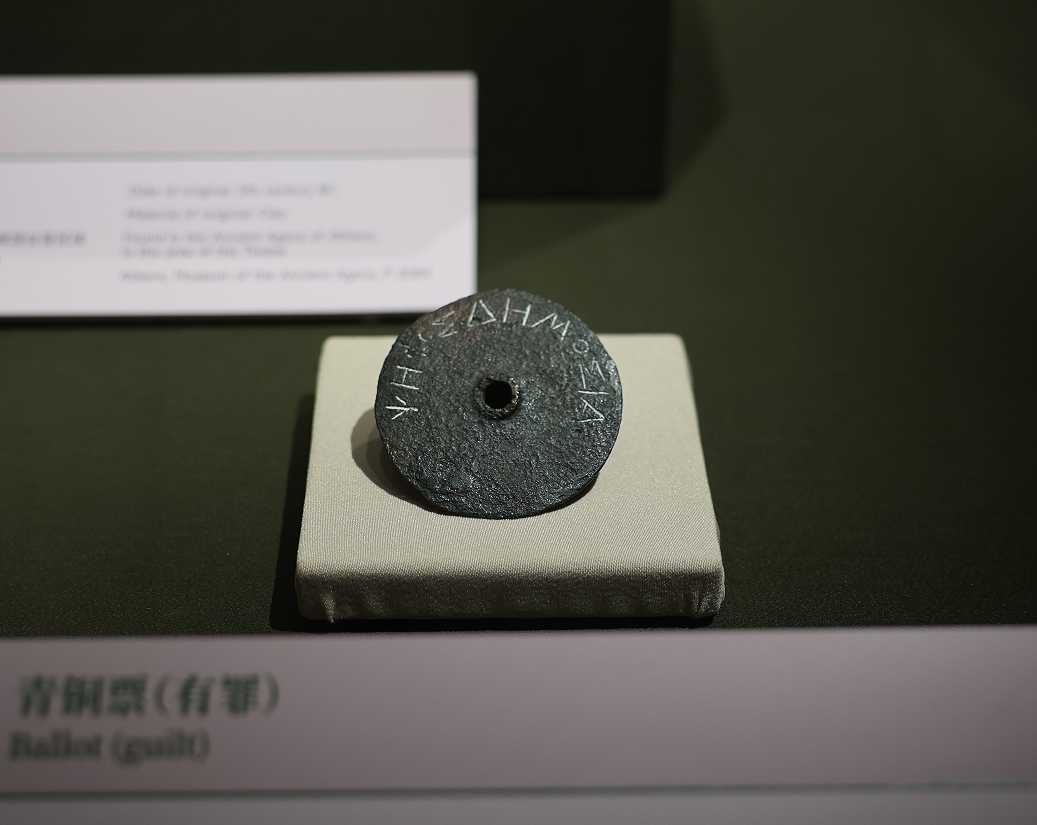
Bronze Ticket (Guilty) Hellenistic Bronze
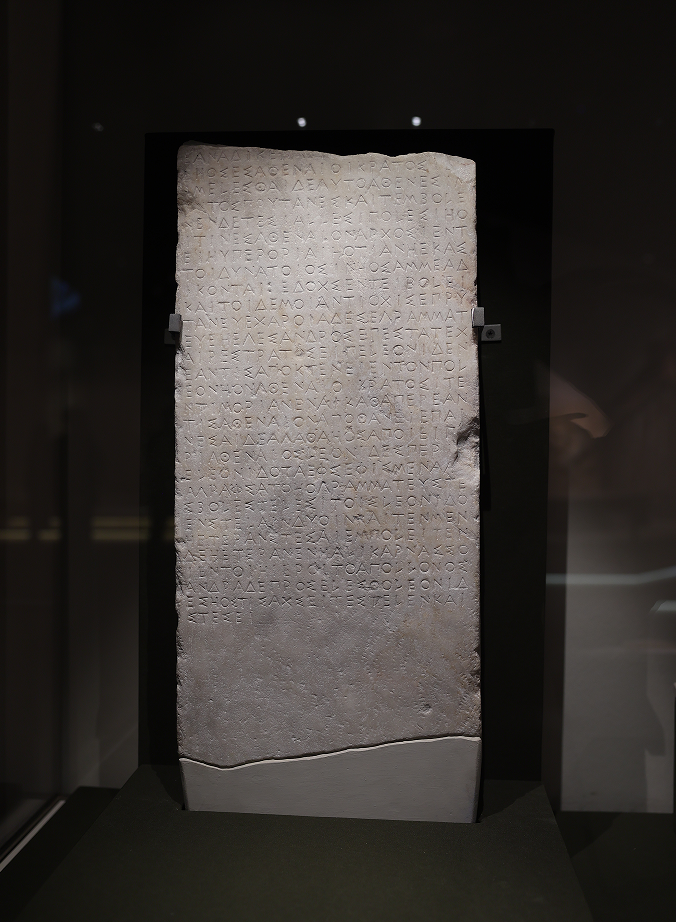
Decree granting honorary citizens to Leonides of Halicarnassus 440- 427 BC Marble

Lottery 162 - 161 BC Marble
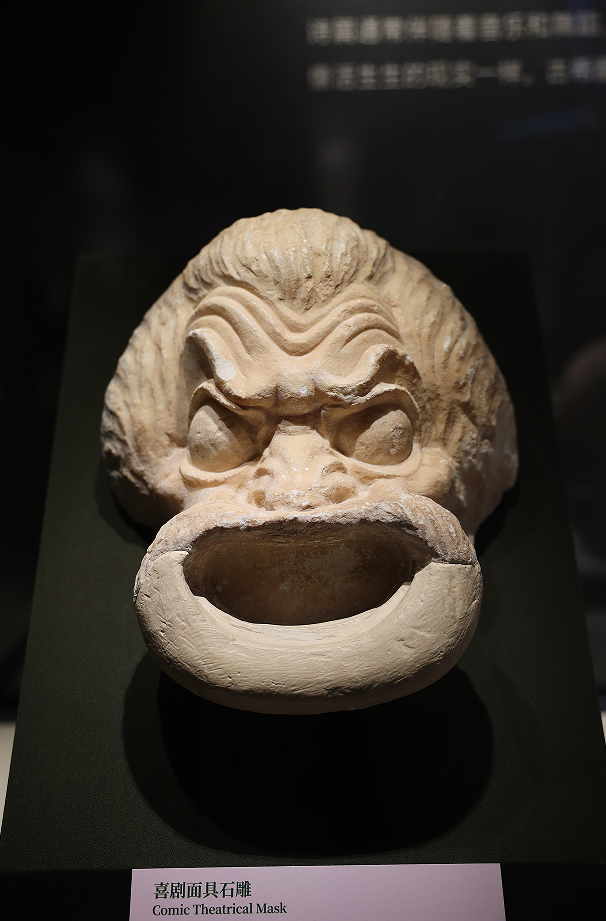
Comedy mask stone carving marble in the second half of the 4th century BC

Wish embossed marble from 375- 350 BC
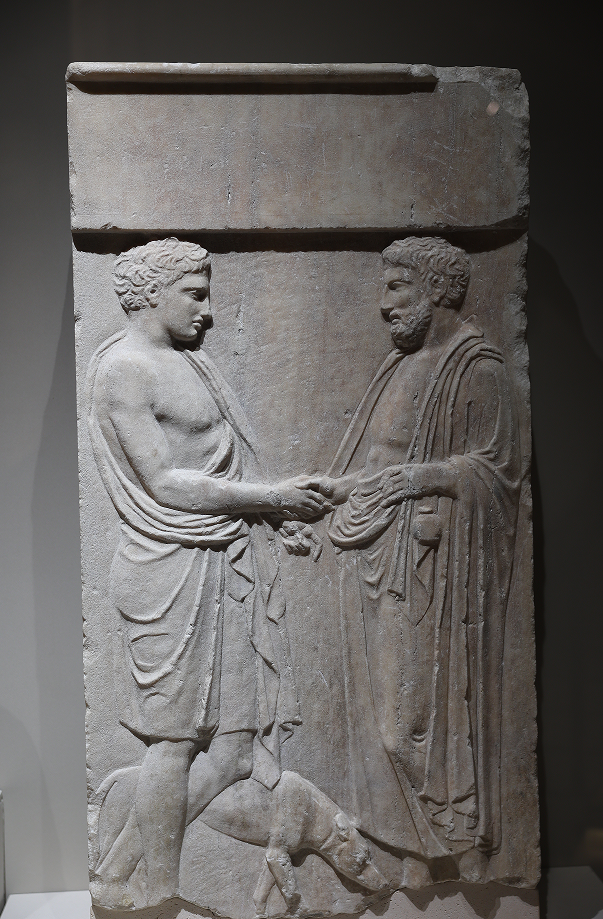
Tombstone circa 400 BC marble
The tombstone depicts a shallow embossed handshake between two male figures. A young man with short curly hair stood on the left, wearing a short cape. His left hand, which had once held a sweat scraper or belt, was no longer there. There is a dog next to him, depicted in the background with its head bowed. The young man shook hands with a mature bearded man. The bearded man stood on the right, with a rope hanging a painting oil bottle drawn on a stone on his left wrist.
In this typical scene of farewell from the classical period, the deceased son shakes hands with his father, and the oil painting bottle retained by the father actually refers to the sports activities that the son no longer performs. The idealistic rendering of the characters 'emotions and the avoidance of direct mention of death are also characteristics of the embossed tombstones of the classical period. The stone tablet was once erected in a cemetery in Athens.

Athena head 2nd century AD marble
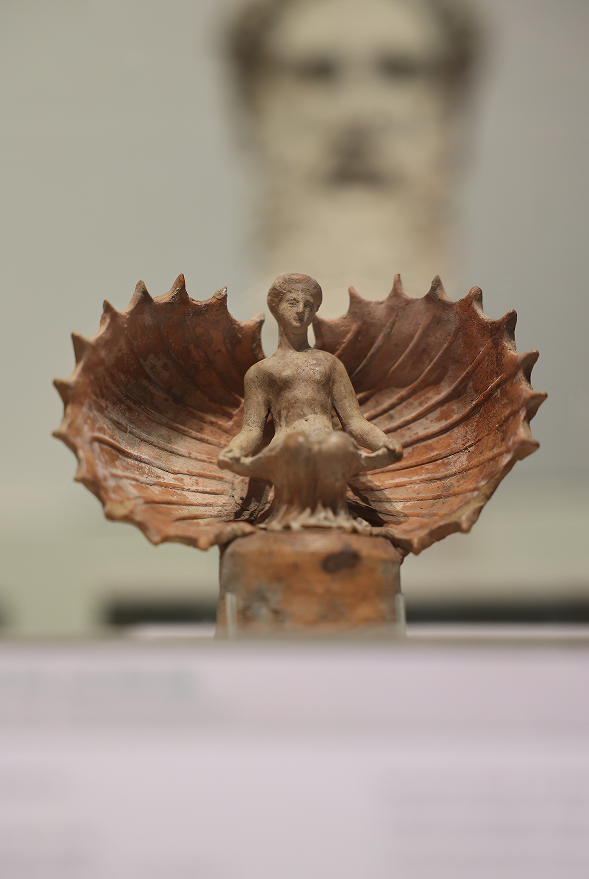
Aphrodite pottery statue of light orange pottery in the second half of the 4th century BC
cultural communication
The Kingdom of Macedonia is located in the remote northeastern region of Greece. After King Philip II ascended the throne, he worked hard to govern the country, and the national strength of the Kingdom of Macedonia grew rapidly. In 337 BC, Philip II convened various Greek city-states to gather in Corinth and established the principle of stopping the internal strife among the Greeks and uniting against Persia, which became a landmark event in Greek history.
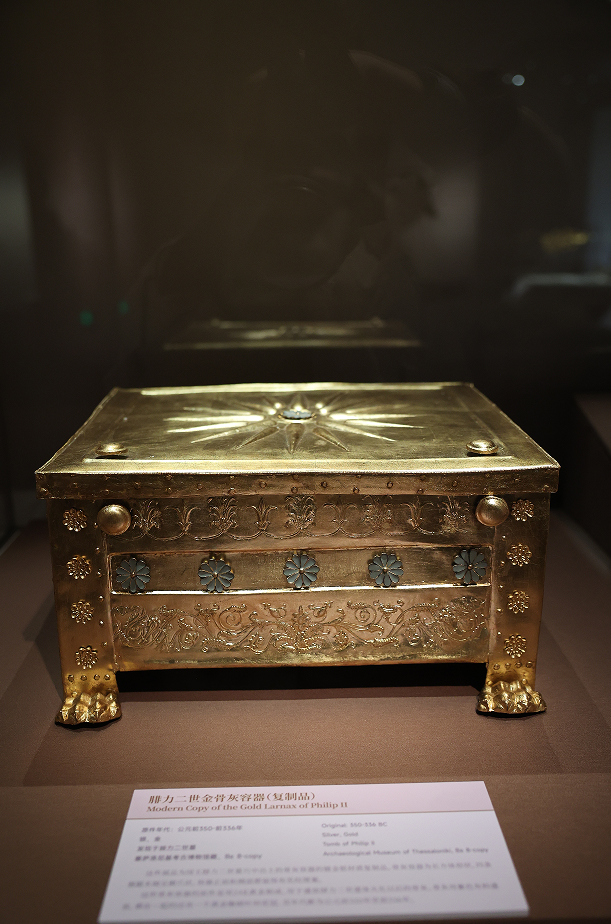
Philip II's golden ashes container (replica) Original date: 350- 336 BC silver, gold
In 336 BC, Philip II was assassinated and his son Alexander ascended the throne. After conquests, before he died in 323 BC, Alexander had established an unprecedentedly vast empire spanning the three continents of Europe, Asia and Africa. Although the Alexander Empire did not exist for a long time, its establishment announced the arrival of the Hellenistic era, accelerated the trend of cultural exchanges between the East and the West, and opened a new chapter in world history.

Bow box buried in the tomb of Philip II (replica) 350- 340 BC (replica: 1980s) Silver, gold
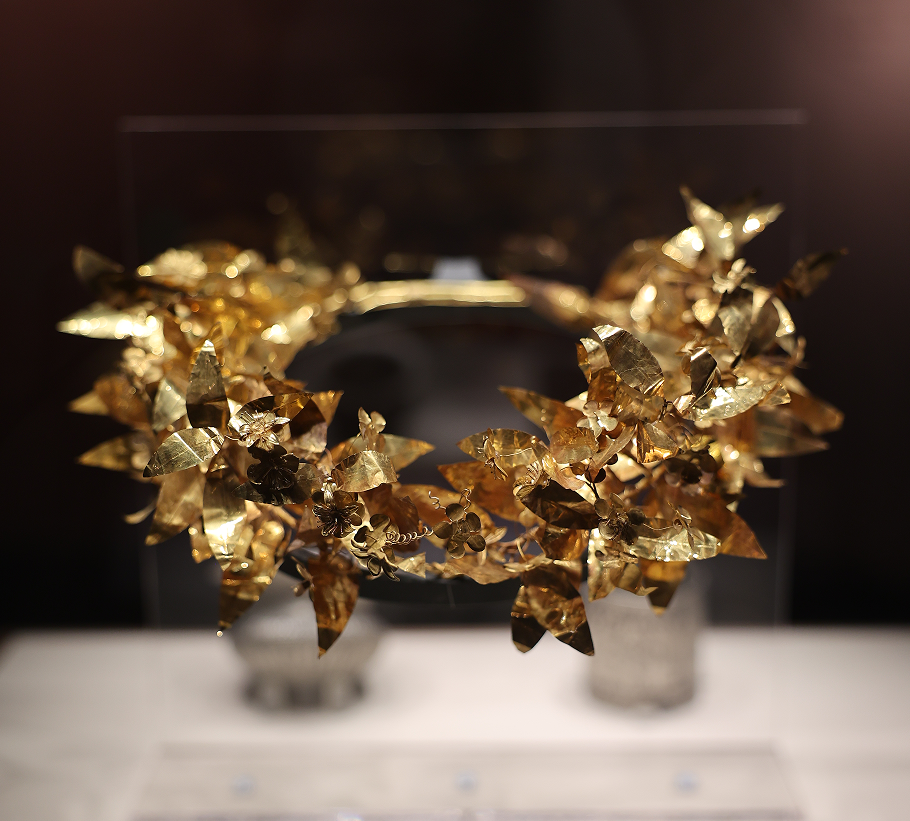
Myrtle shaped corolla 340- 325 BC gold and enamel
This crown is a myrtle shaped gold crown with enamel decoration. The tip leaves of the corolla are cut from gold foil and twisted into a threadlike stem at the bottom of the wreath, with the raised midrib of a true myrtle leaf. At the center of the corolla, two gold threads are inserted into the tops of the two main branches and then tied into a Hercules knot that ends in a spiral.
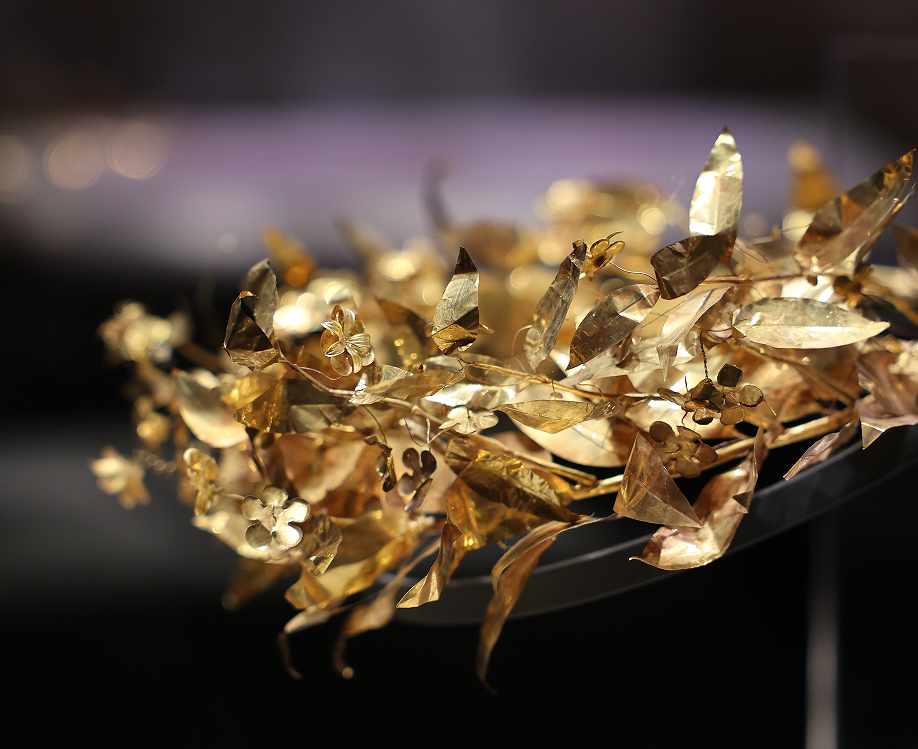
Myrtle shaped corolla 340- 325 BC gold and enamel
The fragrant myrtle plant is a sacred object of the goddess Aphrodite, symbolizes immortality and is the inspiration for this decoration. In ancient Greece, gold, gilded and natural corolla were used for various rituals related to mysteries, sacrifices, wine offerings, banquets, competitions and drama. In Macedonia, golden crowns were placed in the tombs of aristocrats as personal belongings of the deceased.
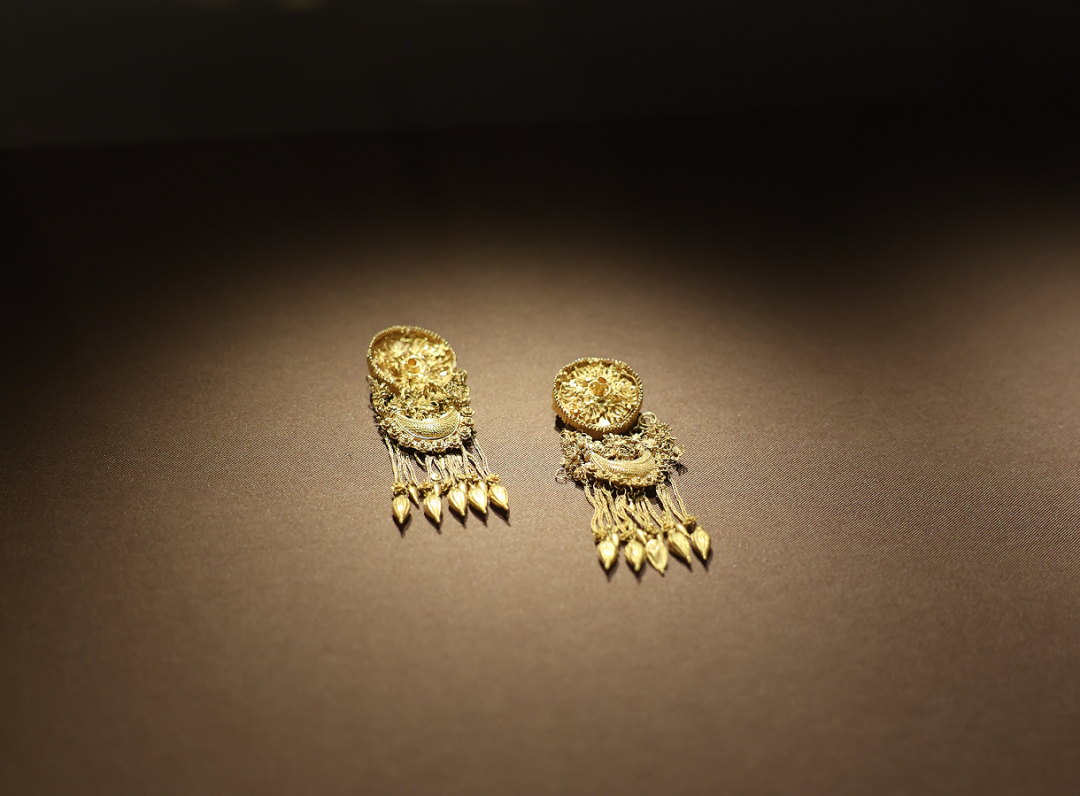
Earrings 300- 280 BC gold

Arrowhead shaped decorative necklace wine jar shaped decorative necklace 300- 280 BC
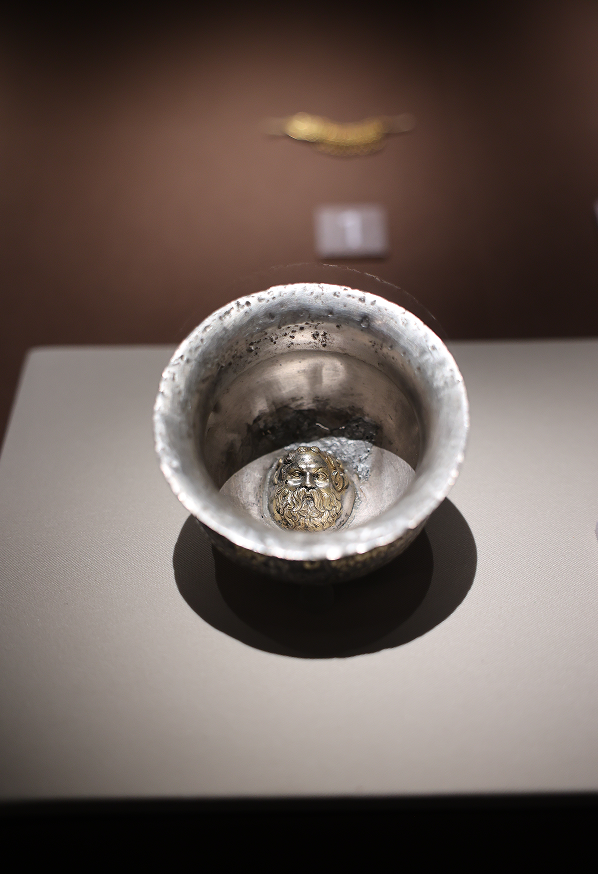
Cup 300- 280 BC Silver

The decree tablet conferring the honor on Asclepiodos 323/322 BC marble
This exhibition continues until May 18, 2025.
(This article is synthesized from the Capital Museum and the Cultural and Cultural Circle)
